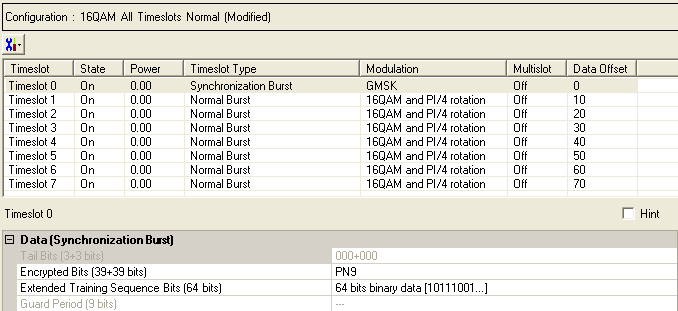
To open the Data node, click Data in the tree view. The figure below shows the Data node.
The timeslots shown below are set to show available timeslot types, not to show a typical test configuration.

|
Data (Synchronized Burst) |
|---|
Click  to display a drop-down menu in which you can copy a timeslot configuration
from one timeslot to another.
to display a drop-down menu in which you can copy a timeslot configuration
from one timeslot to another.
Use the Data window to define the bits in the bursts. The cells displayed in the Data section are determined by the burst type (Timeslot Type) for the selected timeslot as defined in the Timeslots window. In the window shown above, Timeslot 3 is selected so the data cells provided are for setting up a Synchronization Burst.

Tail Bits (3+3 bits)
Tail bits are set by the software at 000. This setting is not editable.
Choice: PN9 | PN15 | User Defined Bits
Default: PN9
Click the Details button  in this cell to open the
in this cell to open the  Data Source Selection
window.
Data Source Selection
window.
Select , , , or to use for the encrypted bits.
Choice: PN9 |PN15 | User Defined Bits
Default: X "B962040F2D45761B"
Enter 64 bits to use as the extended training sequence bits.
The guard period bits are set by the software. This setting is not editable.